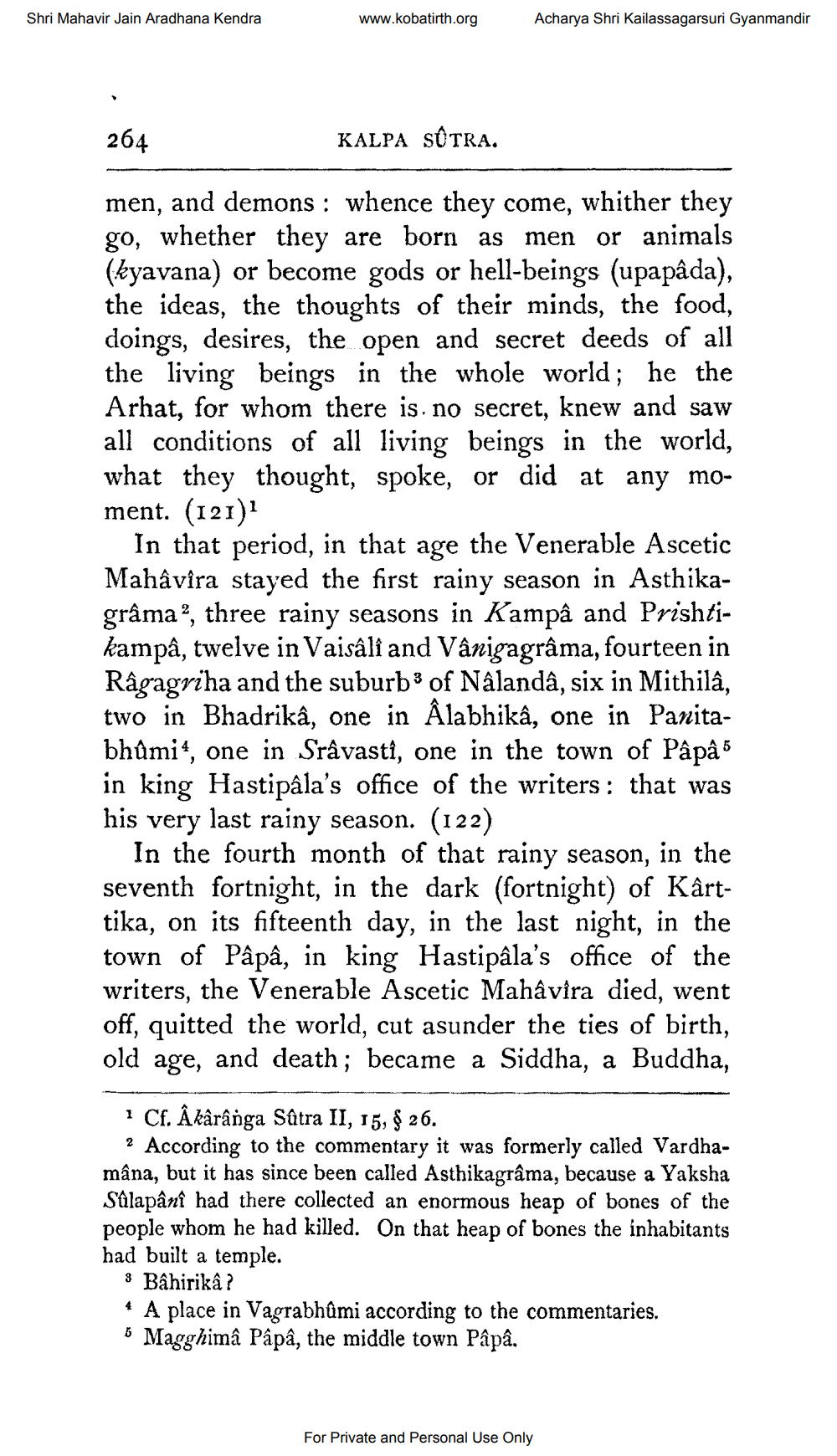________________
Shri Mahavir Jain Aradhana Kendra
www.kobatirth.org
Acharya Shri Kailassagarsuri Gyanmandir
264
KALPA SÚTRA.
men, and demons: whence they come, whither they go, whether they are born as men or animals (kyavana) or become gods or hell-beings (upapâda), the ideas, the thoughts of their minds, the food, doings, desires, the open and secret deeds of all the living beings in the whole world; he the Arhat, for whom there is no secret, knew and saw all conditions of all living beings in the world, what they thought, spoke, or did at any moment. (121)1
3
In that period, in that age the Venerable Ascetic Mahâvira stayed the first rainy season in Asthikagrâma2, three rainy seasons in Kampâ and Prishtikampâ, twelve in Vaisâli and Vânigagrâma, fourteen in Ragagriha and the suburb of Nâlandâ, six in Mithilâ, two in Bhadrikâ, one in Âlabhikâ, one in Panitabhumi, one in Srâvasti, one in the town of Pâpâ in king Hastipâla's office of the writers: that was his very last rainy season. (122)
5
In the fourth month of that rainy season, in the seventh fortnight, in the dark (fortnight) of Kârttika, on its fifteenth day, in the last night, in the town of Pâpâ, in king Hastipâla's office of the writers, the Venerable Ascetic Mahâvira died, went off, quitted the world, cut asunder the ties of birth, old age, and death; became a Siddha, a Buddha,
1 Cf. Âkârânga Sûtra II, 15, § 26.
2 According to the commentary it was formerly called Vardhamâna, but it has since been called Asthikagrâma, because a Yaksha Sulapânî had there collected an enormous heap of bones of the people whom he had killed. On that heap of bones the inhabitants had built a temple.
3 Bâhirikâ?
4
A place in Vagrabhûmi according to the commentaries.
5 Magghimâ Pâpâ, the middle town Pâpâ.
For Private and Personal Use Only




